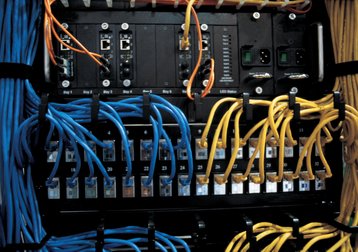Software network virtualization company Midokura has raised $20.4 million in Series B funding, bringing total investment in the business to over $44 million.
Funding came in part from Japanese Fintech company Simplex, Innovation Network Corporation of Japan and board member Allen Miner.
Lots of money, lots of plans
Talking to DCD, co-founder and CEO of Midokura Dan Dumitriu said that the company hopes to accelerate growth with the new cash infusion.
“What we’re going to do is make a big push into the adjacent market of the container orchestration platforms, where we’ve just been dabbling for the past year or so, like Kubernetes, Docker, Mesos, Cloud Foundry and so on, so called ‘Container-as-a-Service’. So that’s going to be one of the areas that we expand into, as well as strengthening our core market around OpenStack and Infrastructure-as-a-Service.”
Dumitriu also told DCD that “Fujitsu has chosen MidoNet to be the networking substrate for K5, which is their latest generation of cloud infrastructure.” Fujitsu recently announced its worldwide roll-out plans for K5, which should appear outside Japan later this year.
Midokura teamed up with Dell in 2014 on SDN, and Dumitriu sees potential for future partnerships with the firm: “I think within Dell, there are various opportunities to package together the different parts of the infrastructure, like in a converged model.
“And those are still being worked out, to be honest, we’re trying different models with them, and I think something is going to be successful, because, as an organization, Dell is getting better and better at delivering infrastructure and complete solutions to enterprise customers. Traditionally, they weren’t super strong in enterprise, and now they’ve become much stronger, and after being merged with EMC it’s a different ballgame.”
2014 was also the year the company open-sourced its MidoNet virtualization technology, after predicting a shift towards open source. “We got ahead of a situation which was happening in the market, which is that network virtualization, the overlay itself, is commoditized. So we kinda saw that coming and said ‘well, this thing is not going to be our core money-maker for much longer’.
“So we open sourced and essentially gave away the core technology – at that time, to be honest, it felt very uncomfortable, because we were not ready to go to market with the value-added product yet, so all we were selling at that time was the same thing as the open source product plus a GUI plus support.
“And then over the next year after that we built MEM Insights, and that’s actually been quite positively received, and it’s valuable enough that people are willing to pay for it at scale. And we have a couple of other things cooking that are add-ons to the open core.”
The shift to an open source core with paid add-ons proved successful for Midokura, with the most recent OpenStack User Survey naming MidoNet the number one third-party Neutron plugin used by large-scale OpenStack Clouds with over 1,000 cores.
Dumitriu said: “It was a bit of a surprise to me, but there you go. I think within the OpenStack deployments, there are a lot of small ones, and if you look at the numbers from the survey, it’s like 80 percent of the deployments are using Neutron basic networking, or whatever nova-networking… and my thesis is that, frankly, most of those are toys. It’s called a deployment in the survey, but really somebody is just playing around with it.
“I think that once you get into a real production situation: networks when they’re stressed, failures, et cetera, the basic open source stuff in the upstream OpenStack project doesn’t cut it. Somebody has to move to a commercial solution, whether that be ours or somebody else’s. That is why we exist, to make a product which is scalable and fault tolerant and so on.”

